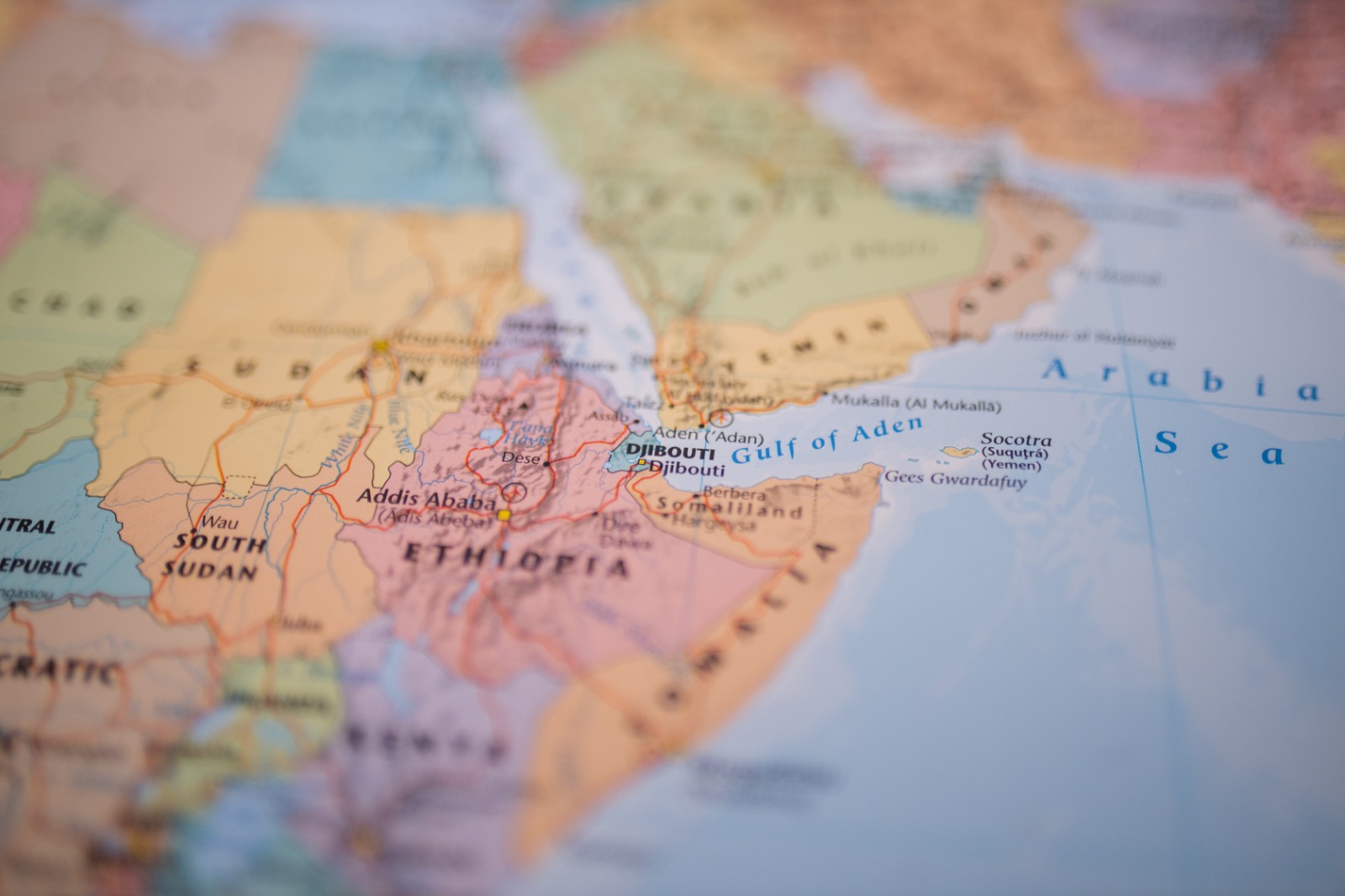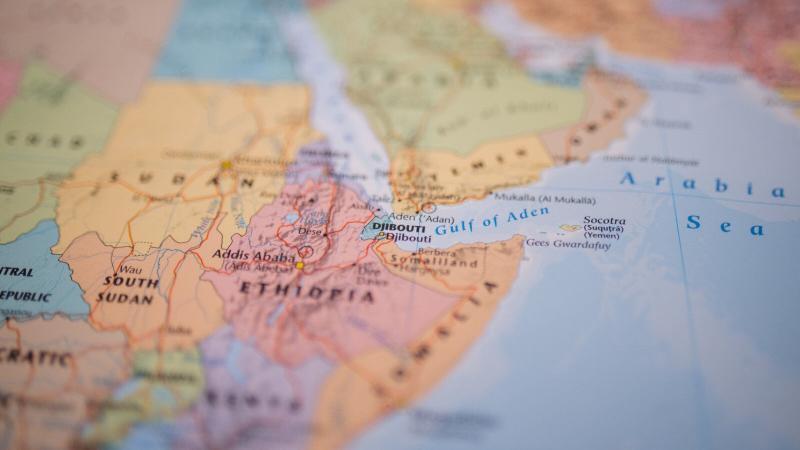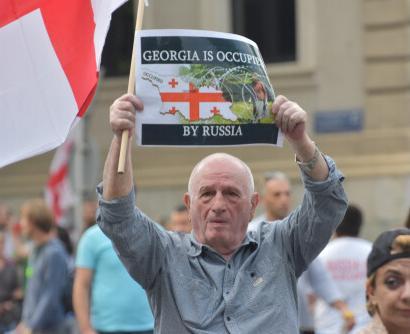Abstract: The onset of the pandemic has instigated a dramatic reduction in both Foreign Direct Investment (FDI) and foreign aid towards Africa. Most western states have redirected their rainy day funds to tackling Covid-19 at a national level, which has led to a decrease in investments dedicated to development and stabilization programs. On a broad scale, what this means for the vastly underprepared countries in the Horn of Africa (HoA) that similarly lack sustainable policies and consistent implementation in the rule of law, is dire setbacks – presumably for the next 5 to 7 years. This article analyzes the lasting impacts of Covid-19 in terms of development, security, counter-terrorism, the spread of misinformation as well as further restrictions on the freedom of the press. Likewise, the re-emergence of extreme poverty and its endless cycle together with an increase in school drop-out rates is explored.
Bottom-line-up-front: The pandemic is highly likely to set the HoA back by a few years, with foreseeable decreases in foreign investment and development, increasing crime rates, conflict, terrorism, extreme poverty, misinformation, and drop-out rates. These factors are a major concern in a region where the youth, who represent a large percentage of the population, have been highly impacted by the pandemic.
Problem statement: How has Covid-19 affected the security, humanitarian, and socio-economic status in the HoA?
So what?: The international community, along with policy-makers, must pay close attention to the impacts of the pandemic so as to better understand where Africa is headed in the next 5-7 years.

Source: shutterstock.com/Kanel Bulle
Tanzania
International media outlets have flooded with criticism of Tanzania’s late President, John Mugufuli, since his 2015 election into power. Magufuli’s policies regarding cyber-security (social media content) and restrictions to journalism in conjunction with freedom of the press had various news outlets coin him a dictator. The former President introduced ways to curb freedom of the press, for instance the taxation fees that content creators had to pay.[1] Taxations were raised higher than most content creators and bloggers could afford, which created red-tapes in the bureaucratic system and a decline in the number of young content creators. Foreign press and local activists have criticized the government for implementing cyber-security policies as an excuse to restrict freedom of speech and freedom of the press.[2] Recently, the Tanzanian Minister of Information, Harrison Mwakyembe, signed a bill that prohibits the publishing of content covering the ongoing pandemic without official permission.[3]
On a whole, opposition groups, social media users and journalists have been restricted from posting content that criticizes the Tanzanian government’s regime and its lack of policies surrounding the pandemic. In light of the President’s recent passing, it will deductively be a challenge to recover from the impact of the aforementioned restrictions by simply amending the law. Taking into consideration the nation’s large youth population and the prohibitions on blogging and journalism, Tanzania is likely to realize more brain drain among young socialites and entrepreneurs. Presumably, most of the youth will migrate to neighboring states in search of “greener pastures”.
On a whole, opposition groups, social media users and journalists have been restricted from posting content that criticizes the Tanzanian government’s regime and its lack of policies surrounding the pandemic. In light of the President’s recent passing, it will deductively be a challenge to recover from the impact of the aforementioned restrictions by simply amending the law.
Apart from brain drain, Tanzania faces another politicized issue capable of further delaying its development and foreign investment, namely citizenship. The country has made its policy regarding the attainment of passports extremely difficult for the locals born there. Such an exclusionary policy demoralizes citizens along with the diaspora community from re-investing into their home country which multiplies the negative effects of brain drain.
Tanzania has also had tense disagreements with international donors and regional organizations with regard to the international community. For instance, the World Bank recently cancelled a $300 million loan to the country in light of its reiteration of a policy that banned pregnant girls from attending school.[4] In a similar fashion, Denmark cancelled nearly $10 million (€8.7 million) worth of aid money to the East African nation.[5] The World Bank’s contribution would have been injected into its education sector for the academic year 2018/2019. The previously stated events highlight the level of disagreeableness present in Tanzania’s leadership along with the adamancy seen in its exclusionary policies towards its citizens. An additional criticism is that the regime is unfortunately not proactive enough or as dedicated to enacting solution-focused policies. Moreover, it is highly likely that a steep increase in drop-out rates will be witnessed given the pandemic in conjunction with the prohibition of pregnant girls from schools.
Ethiopia
Meanwhile, analysts perceive the conflict that erupted in Ethiopia to not only be deteriorating but also to be an indicator of further destabilisation within the region. While Tanzania’s cyber-security policies threaten democracy, on the one hand, the Ethiopian government comparatively sent its national army and militia to massacre Tigrayans.[6] Undoubtedly, it is ground for additional destabilization within the area. The public has also witnessed African governments employing militia groups to commit atrocities by fighting opposition parties or attempting to wipe out entire ethnic groups. A similar tactic was wielded in Darfurwhen the Sudanese government aided a militia group in an attack against civilians in Northern Darfur in the years 2003 and 2004.[7]
The political leaders involved in those atrocities are likely to avoid convictions of genocide at the Hague Convention (because of the strategy of arming militia and the greater argument of intent). The latter is important because political leaders can pose a strong argument of government forces being sent as a method to diffuse terrorist groups and or political insurgencies. The Ethiopian government has employed the same strategy as the Sudanese government, whereby militias known as Fano with no uniform arrived in Humera.[8] Fano was seen massacring unarmed civilians with machetes and other objects. Often, governments in Africa recruit militia to evade the labeling of genocide by the international community. This means that the political leaders involved in the Tigray massacre will be able to avoid trials at the Hague because of the use of militia in the warfare. Also, political leaders can avoid trails in the event that the conflict is classified as ethnic cleansing as opposed to genocide. This is important because the term ethnic cleansing is not recognized as a crime under international law.
Often, governments in Africa recruit militia to evade the labeling of genocide by the international community. This means that the political leaders involved in the Tigray massacre will be able to avoid trials at the Hague because of the use of militia in the warfare. Also, political leaders can avoid trails in the event that the conflict is classified as ethnic cleansing as opposed to genocide.
A New York Times article disclosed that an internal US government report described the conflict in Ethiopia as a systematic campaign of ethnic cleansing in the Tigray region.[9] The report highlighted that “whole villages were severely damaged or completely erased”.[10] Obviously, the current conflict might last for several years to come, and even then, peace will not have arrived in the time span of a single conference. Undoubtedly, Tigrayans have strong ethnic roots and a rich history that dates back hundreds of years. It spotlights a challenge that the Ethiopian government has encountered in its attempt to achieve the previously mentioned political objective. Nonetheless, the incumbent government insists that its fight is against the Tigray People’s Liberation Front (TPLF) as opposed to the Tigrayan people, however, reports have asserted that a number of Tigray people have been targeted and prevented from travelling or suspended from government jobs.[11]
Hundreds of thousands of inhabitants were displaced as a result of the conflict whereby many more are faced with hunger and malnutrition.[12] In addition, reports have detailed the gruesome violence the population has been subjected to including mutilation, mass murder, and the rape of women. Unquestionably, the international community must pay more attention to the conflict given that reports from counter-extremist programs have asserted that sexual abuse is a push factor (contributor) to an individual becoming a suicide bomber.[13]
Although some reports have disclosed that the TPLF has conducted atrocities in an attempt to frame the Ethiopian government, all the other massacres were almost certainly enacted by militiamen from the neighboring Amhara region. Witnesses have similarly divulged information about house-to-house killings, rape and the looting of commercial buildings, health facilities, churches, and mosques.[14]
Kenya
Another issue that exacerbates the instability in the HoA is the current Kenya-Somalia maritime dispute. There have been ongoing political tensions between Kenya and Somalia for several years. However, in 2019, the situation began to escalate. The maritime dispute specifically led to Somalia resorting to submitting the case to the International Court of Justice (ICJ) in 2017. Political analysts argue that Kenya’s strategy was to continuously delay the ICJ hearing of the case in an attempt to wait out for President Farmajo’s government to finish its term in office.[15] Regardless, disappointment followed soon after as Farmajo insisted on staying in office in February of 2021 with the ICJ hearing set to take place in March the same year. Kenya resorted to requesting that the hearing be delayed for the fourth time, which the ICJ declined.[16] The tight spot saw Kenya decide to withdraw from the case. This sheds light on the deterioration of the present political relations between Somalia and its neighbour.
In April 2021, Kenya’s Interior Minister announced the closure of the Dadaab and Kakuma refugee camps and gave the UNHCR – United Nations Refugee Agency – a timeline of two weeks to present an exit strategy.[17] Kenya has threatened to close the camps several times in the past. Notably, unless the UN negotiations are successful, the closedown of Dadaab and Kakuma by 2022 is highly feasible. Both states are also aware that the closure of the refugee camps will create an influx of refugees and Internally Displaced People (IDPs). The UNHCR has reported over 200,000 refugees in Dadaab and Kakuma refugee camp has a population of 196,666 registered refugees and asylum-seekers, reported in July2020.[18], [19]
In a similar fashion, refugees from both camps receive payments from UNHCR. If the camps close, refugees will be more vulnerable to malnutrition, Covid-19, human rights abuse, and recruitment into violent extremist groups. Research has shown that the 2015 Garissa University attackers were Al-Shabaab sympathizers from the Dadaab camp. On a whole, this means that Kenya’s statement to close Dadaab and Kakuma will have significant repercussions on the security and safety of its citizens. As a matter of fact, recent articles and research papers have illustrated the link between Covid-19, the increase in radicalization, and recruitment into Violent Extremist (VE) groups.[20], [21], [22], [23]
The findings concluded that violent extremist groups will shift their approach from attacking to recruiting during the pandemic. Therefore the closure of both camps would be beneficial to Al-Shabaab given the rise in unemployment rates and the shutdown of universities in Kenya, which has magnified poverty and made the youth more vulnerable to recruitment. Without a sustainability action plan, which among many other factors should include vocational training and higher education for women and youth, Al-Shabaab would have a clear advantage. Furthermore, shutting down the camps would give rise to feelings of grief and resentment towards Kenyans, giving leeway for Al-Shabaab to recruit refugees. In other words, it would be a push factor for refugees in Dadaab and Kakuma to actively participate in the armed conflict between Somali National Army (SNA) and Kenya Defense Force (KDF) in Gedo, Somalia.
Without a sustainability action plan, which among many other factors should include vocational training and higher education for women and youth, Al-Shabaab would have a clear advantage. Furthermore, shutting down the camps would give rise to feelings of grief and resentment towards Kenyans, giving leeway for Al-Shabaab to recruit refugees.
Reports have indicated that Kenya sided with Jubaland against the Federal Government of Somalia (FGS) and engaged in the armed conflict in Gedo, Belet Hawo village against the SNA.[24] Belet Hawo shares a border with Mandera county in Kenya and too often, Somali-Kenyans living in Mandera pay the price. The armed conflict has led to police violence and further systemic discrimination against Somali-Kenyans in Mandera. Moreover, villages in the county remain under-developed, they lack access to security, infrastructure and education, implying that when AS members offer jobs and payments to elders and community members, it is unlikely that locals will decline their advances. Better said, research has revealed that terrorist and extremist groups exploit the vulnerabilities of marginalized groups.[25] In turn, those rural communities benefit from the security and employment opportunities promised by AS.
Equally, education rates are expected to plummet. Following the closure of schools and universities in Kenya, a significant number of youth have returned to their respective villages. Likewise, teenage pregnancies have sky-rocketed in East Africa since sexual favors have become a currency for attaining basic needs such as food. Working parents have also been laid off due to the pandemic, which has significantly reduced household income. The long-term economic drawbacks of adolescent pregnancies are an increase in school drop-out rates, difficulty in feeding newborns, and hardships in acquiring the necessitated skills for highly paid jobs. This is expected to heighten the effects of the continuous cycle of extreme poverty – which the World Bank and UN have been working to eliminate for more than a decade.[26]
The UN Ambassador Sven Jürgenson, stated that 42 to 66 million children could fall into “extreme poverty” as a result of Covid-19, and the UNESCO cited that more than 1.5 billion students in over 191 countries have difficulties in continuing their education. As for teenage boys, many have also returned to their villages where some income can be earned in assisting at their parents’ farm along with other minor jobs for instance operating motorbikes and running small businesses. Those sources of income create a further disincentive for adolescent boys in eventually resuming school. The long-term impact here also highlights that they are at risk of staying in a continuous cycle of low-paid, low-income jobs, and in the long run vulnerable to poverty and recruitment by gangs or violent extremist groups.
In like manner, misinformation about covid vaccines has led to an increase in Covid_19 cases. The Delta variant has hit Kenya and Uganda, but many communities are unwilling to take the vaccines because of the misinformation available on social media. According to WHO, misinformation is a major factor driving pandemic around the world.[27] Hundreds of thousands of lives have been lost to Covid-19 and yet many are adamant about avoiding the growing number of complimentary vaccines. The latter is due to decades of mistrust of the West, created partly by colonial history and exacerbated by accusations of mass sterilization programs concealed as tetanus vaccinations for women of reproductive age.[28] With that being said, under-developed communities in the HoA will most likely experience an increase in Covid-19 infections within the coming years. In urban cities, even as vaccine supplies increase, the number of civilians fully vaccinated is low.
Another reason for low vaccine rates in the HoA is the lack of accessibility to communities in rural areas. Governments have yet to establish a well-curated strategy for providing vaccines to communities lacking access to infrastructures such as roads, telecommunication services, and healthcare centers. Rural communities in the HoA could benefit from the funding of drones and local airplanes to send medicine and covid vaccines to areas that have weak infrastructures and healthcare systems.
Overall, policy-makers should pay attention to the long-term impact that Covid-19 will have on radicalization and the strengthening of extremist groups, terrorism, cybersecurity, education and poverty rates, as well as the rise in authoritative governance. Internal insecurity can spread across borders and create instability in affected states. This means that development programs focused on gender equality, equal access to justice and political representation of minorities, Water, Sanitation, and Hygiene (WASH) projects, infectious disease control, and extreme poverty are all likely to exacerbate – setting the region back by 5-7 years.
Governments in the HoA should invest in research to find out the leading cause for low vaccine rates, e.g., the lack of accessibility or misinformation. Investing in the tech industry to send medicine and vaccinations across countries is another mitigation strategy for Covid_19 in the HoA. Investing heavily in awareness campaigns and battling vaccine misinformation, improving healthcare systems across the region, but even more so in rural areas whereby small clinics and health centers can provide information about Covid vaccines and incentives for taking them are other strategies of fighting the pandemic.
Ruqaya has worked with several Non-Government Organizations (NGOs) and Intergovernmental Organizations (IGOs) on a number of stabilization and development programs in Somalia and Kenya. She has co-authored several publications covering issues in the Horn of Africa, the Middle East, and the United States (US). Having obtained a Bachelor of Arts in International Affairs from Qatar University, Ruqaya proceedingly acquired her Master’s Degree in International Relations at the United States International University (USIU – Africa in Nairobi). The views contained in this article are the author’s alone and do not represent the views of ACTRI.
[1] Shayera Dark, “Strict New Internet Laws in Tanzania are Driving Bloggers and Content Creators Offline,” Theverge, July 06, 2018, last accessed July 01, 2021, https://www.theverge.com/2018/7/6/17536686/tanzania-internet-laws-censorship-uganda-social-media-tax.
[2] Idem.
[3] DW, “Tanzania Announces New,” DW, Tough Rules for Foreign Media, last accessed July 01, 2021, https://www.dw.com/en/tanzania-announces-new-tough-rules-for-foreign-media/a-54528870.
[4] DW, “Opinion: Tanzania’s Magufuli, a Reformist or Dictator?,” DW, last accessed July 01, 2021, https://www.dw.com/en/opinion-tanzanias-magufuli-a-reformist-or-dictator/a-46338182.
[5] Idem.
[6] Amnesty International, “Ethiopia: Investigation Reveals Evidence that Scores of Civilians were Killed in Massacre in Tigray State” (Study, Amnesty International, 2020), last accessed July 01, 2021, https://www.amnesty.org/en/latest/news/2020/11/ethiopia-investigation-reveals-evidence-that-scores-of-civilians-were-killed-in-massacre-in-tigray-state/.
[7] Human Rights Watch, “Darfur Destroyed: Ethnic Cleansing by Government and Militia Forces in Western Sudan” (Study, Human Rights Watch, 2004), last accessed https://www.hrw.org/report/2004/05/06/darfur-destroyed/ethnic-cleansing-government-and-militia-forces-western-sudan.
[8] “Tigray Crisis: How Ethiopian Doctors fled Militia Attacks,” BBC News (December 17, 2020), last accessed July 01, 2021, https://www.bbc.com/news/world-africa-55236354.
[9] Declan Walsh and Abdi Latif Dahir, “Why is Ethiopia at War with Itself?,” New York Times, November 05, 2020, last accessed July 01, 2021, https://www.nytimes.com/2020/11/05/world/africa/ethiopia-tigray-conflict-explained.html.
[10] Idem.
[11] “The Tragedy of Ethiopia’s Conflict in Tigray,” Financial Times (February 10, 2021), last accessed July 01, 2021, https://www.ft.com/content/7d4e43f1-236b-44a9-a9bc-7b1ea46500f1.
[12] “Ethiopia Tigray Crisis: Fear of Mass Starvation,” BBC News (January 18, 2021), last accessed July 01, 2021, https://www.bbc.com/news/world-africa-55695123.
[13] Becky Carter, Women and Violent Extremism, GSDRC: Applied Knowledge Services(March 13, 2013), last accessed July 01, 2021, https://gsdrc.org/publications/women-and-violent-extremism/.
[14] Dalya Alberge, “Churches and Mosques in Tigray ‘Vandalized and Looted’ in Ethiopian Purge,” The Telegram, January 17, 2021, last accessed July 01, 2021, https://www.telegraph.co.uk/news/2021/01/17/churches-mosques-tigray-vandalised-looted-ethiopian-purge/.
[15] “Kenya Boycotts ICJ Hearing on Somalia Sea Boundary Row,” Al Jazeera News (March 15, 2021), last accessed July 01, 2021, https://www.aljazeera.com/news/2021/3/15/kenya-boycotts-world-court-hearing-on-somalia-sea-boundary-row.
[16] Mohamed Omar Ahmed and David Herbling, “Somalia Opposes Kenya’s Call to Further Delay Border Case,” Bloomberg (February 11, 2021), last accessed July 01, 2021, https://www.bloomberg.com/news/articles/2021-02-11/somalia-opposes-kenya-s-call-to-further-delay-border-case.
[17] “Kenya Tells U.N. iw will Shut Two Camps with 410,000 Refugees by June 2022,” Reuters (April 29, 2021), last accessed July 01, 2021, https://www.reuters.com/world/africa/kenya-tells-un-it-will-shut-two-camps-with-410000-refugees-by-june-2022-2021-04-29/.
[18] UNHCR, “The UN Refugee Agency” (Study, UNHCR, Dadaab Refugee Complex, Kenya), last accessed July 01, 2021,
[19] UNHCR, “The UN Refugee Agency. Kakuma Refugee Camp and Kalobeyei Integrated Settlement” (Study, UNHCR), last accessed July 01, 2021, https://www.unhcr.org/ke/kakuma-refugee-camp.
[20] Rukaya Mohamed, Ardian Shajkovci, Allison McDowell-Smith, PhD and Mohamed Ahmed, “Youth, Violent Extremist Recruitment, and COVID-19 in Kenya,” June 22, 2020.
[21] “The Impact of the COVID-19 Pandemic on Terrorism, Counter-terrorism, and Countering Violent Extremism (2020),” Counter-Terrorism Committee Executive Directorate (CTED), last accessed July 01, 2021, https://www.un.org/securitycouncil/ctc/sites/www.un.org.securitycouncil.ctc/files/files/documents/2021/Jan/cted_paper_the-impact-of-the-covid-19-pandemic-on-counter-te.pdf.
[22] Gary Ackerman and Hayley Peterson, “Terrorism and COVID-19,” Perspectives on Terrorism 14, no 3 (2020): 59-73.
[23] Edith Lederer, “UN chief: Extremists using COVID-19 to recruit online youths,” AP News (April 27, 2020), last accessed July 01, 2021, https://apnews. com/a6cf967c03f7ff00e170949a9eaeb11a.
[24] “Somali Troops, Jubbaland Regional Forces Clash Ahead of Elections,” Al Jazeera News (January 25, 2021), last accessed July 01, 2021, https://www.aljazeera.com/news/2021/1/25/somali-troops-jubbaland-regional-forces-battle-near-kenya-border.
[25] Counter Extremism Project, “ISIS Maximizes Online Propaganda to Target “Marginalized & Vulnerable” (Study, Counter Extremism Project, July 30, 2018st accessed, la https://www.counterextremism.com/press/isis-maximizes-online-propaganda-target-%E2%80%9Cmarginalized-vulnerable%E2%80%9D.
[26] The World Bank, “Understanding Poverty: Poverty” (Study, The World Bank, April 15, 2021), last accessed July 01, 2021, https://www.worldbank.org/en/topic/poverty/overview.
[27] Rich Mendez. “WHO Says Covid Misinformation is a Major Factor Driving Pandemic Around the World,” CNBC Health and Science (August 24,2021) last accessed August 29, 2021, https://www.cnbc.com/2021/08/24/who-says-covid-misinformation-is-a-major-factor-driving-pandemic-around-the-world.html?__source=sharebar|twitter&par=sharebar.
[28] Abby Ohlheiser, “The Tense Standoff Between Catholic Bishops and the Kenyan Government over Tetanus Vaccines,” The Washington Post (November 14, 2014) last accessed July 01, 2021, https://www.washingtonpost.com/news/worldviews/wp/2014/11/14/the-tense-standoff-between-catholic-bishops-and-the-kenyan-government-over-tetanus-vaccines/.






